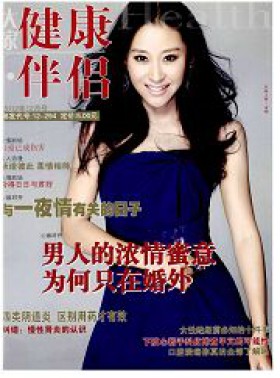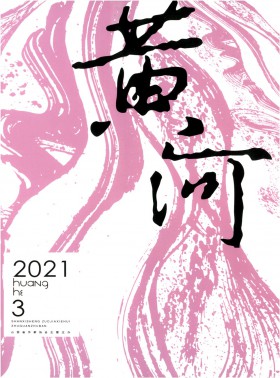前言:中文期刊网精心挑选了浪漫主义美学范文供你参考和学习,希望我们的参考范文能激发你的文章创作灵感,欢迎阅读。

浪漫主义美学范文1
关键词:西方音乐 二十世纪 音乐创作
纵观整个西方音乐发展过程我们会发现,音乐总是随着社会性质的转变而不断变化着。对音乐本质,或者说对艺术的本质的疑问是每个新时代探讨的焦点。人们通过不断的质疑,不断的解答,从而得到新的艺术风格,新的艺术概念。正如哲学家阿多诺德(1903-1969)所说,每个社会都有属于自己的音乐,每个社会的音乐都具有唯一性,并不适用于其他社会。在十九世纪末期,当浪漫主义音乐越过巅峰期并开始衰落的时候,人们急需一种新型音乐方式来适应时代的发展,而两次世界大战的爆发正好为此提供了契机,在二十世纪初的音乐家们的共同努力下,一种完全不同于传统音乐的新风格产生了。
一、“音乐是一种表达情感的手段”――浪漫主义音乐美学
十八世纪,通过启蒙运动,人们对“情感需要用理性的方式来表达”这一概念产生怀疑,对“美”的本质产生怀疑,认为艺术应该是用于表达内心,而不是一种机械的模仿。在康德(1724-1804)的著作《判断力批判》中,康德为我们重新定位了“美”的本质:美,应该是一种感性认知,需要通过各种不同的感觉、情绪来认识它,而不是通过一种理性来定位它。美是一种意识,一种通过对作品的理解,感受不同的情绪,从而产生的东西,而不是一种逻辑的产物①。对于“美”的判断应该根据其“公众性”及“主观性”两个方面来进行判断,而不是通过客观的抽象概念来决定。康德认为,艺术就如同一个自由的游戏,人们通过“兴趣”来参与这个游戏。而音乐,就如同一种听觉的游戏。
整个十九世纪浪漫主义音乐都在追求着这样一种“美”,追求对作曲家内心情感的阐释。为了追求这种情感表达的极限,瓦格纳(1813-1883)提出了“总体的艺术”这一概念。他想要创造一门艺术,一门可以综合所有的艺术表现形式的新艺术,认为只有这样的艺术形式才能够最大化的表达人的内心情感。瓦格纳将他的新艺术展示在了他的乐剧中,他将诗歌、音乐、舞蹈等一切在剧院可能出现的艺术元素融为一体展现在舞台上表达剧中角色的内心情感。为了加强音乐的戏剧效果,他改革了传统的作曲方式,在乐剧创作中大量使用不和谐和弦、转调,将大小调体系发挥到了极致。情感是自由的,他认为只有这样的创作方式才能够更接近于这样的自由。瓦格纳对于二十世纪音乐家们的影响不仅仅在于开始尝试打破传统的大小调体系,还在于他对无终旋律的运用。瓦格纳乐剧中的音乐是难以切断的,因为它没有一个明确的结束点,也就是终止式,二十世纪音乐家在研究瓦格纳音乐的同时将这点引进到自己的作品中,创作了大量的“不完整”作品。这类的“不完整”作品后来成为了二十世纪音乐创作的一大重要特征。
二、《怀疑论》所带来的音乐改革
《怀疑论》的理论基础可以说来源于黑格尔提出的“上帝之死”。尼采(1844-1900)认为,先前欧洲的精神文化中心都是宗教,圣经中告诉人们,上帝七天创造了整个世界,告诉人们已知的所有事物都是由上帝创造的,人也是上帝的产物,人的一切物质精神活动都应该寄托于上帝,上帝判断着整个世界的正误。启蒙运动以后,随着思想的解放,人们对上帝的存在与否产生极大的质疑,尼采沿用黑格尔“上帝之死”的观点,认为“上帝之死”等同于真理之死,由于上帝已死,先前所有已经存在的事物都失去了自己的价值,人们需要重新建立新的价值观,来适应这个新的世界。但是,这样就存在一个问题,既然等同于真理的上帝已经不存在了,那么就意味着人们失去了一个衡量新事物对错的标准,失去了一个对人们现在的作为正误判断的标准,因为作为唯一可以进行判断的上帝已经不存在了。基于这个观点,尼采提出了《怀疑论》,对一切新事物的价值提出怀疑,从“无”中通过辩证,得到事物的本质。怀疑论的影响无疑是巨大的,可以说是二十世纪音乐创作的主要美学观点之一。虽然“上帝之死”只是一个理论,但二十世纪初,由于两次世界大战的爆发,战火充当这个理论的实践基础。两次世界大战直接的影响了整个世界的布局,之前所有的价值观都被战火摧毁,一切事物在战后都得重新建立。虽然战争带来了巨大的伤害,却也成为了创造新世纪的一个契机,让人有机会可以从零开始。在音乐领域,由于价值观的遗失,社会性质的改变,作曲家得到了改革和创新的机会,但同时他们无法确定自己的创作思路是正确的还是错误的,这也是二十世纪音乐创作出现了众多的风格的直接原因。受怀疑论影响的音乐创作风格大致可以分为三类:第一类,积极型。这类作曲家认为,“上帝之死”带来了全新的、自由的创作思潮,使创作风格不再受到束缚,所以应该创作一种全新的音乐风格来适应新的社会。这类作曲家的代表人物为勋伯格以及维也纳第二乐派;第二类,消极型。这类作曲家认为,既然已经丧失了所有的价值观,无法确定新事物的正误,那么就应该延续之前已经确定的正确的价值,而不是冒险试用新的价值。因此,应该回顾历史,在历史中找寻正确的价值并将其改良用于现在。消极派代表人物是斯特拉文斯基;最后一类,沉默型。这类作曲家对新的作曲风格的积极与否表示沉默,因为谁也不知道最终的结果。他们认为,创作的最终目的不在于判断对错,而在于“创新”这个过程。这类作曲家的代表人物是约翰・凯奇、沙弗尔等。
三、社会变迁对音乐的影响
对比浪漫主义音乐和二十世纪音乐,两者最大的区别就在于音乐的“和谐性”,浪漫主义音乐优美动听,而二十世纪的音乐多数让人觉得尖锐刺耳,杂乱无章,这种反差产生的原因我们需要从音乐创作的本质来分析。众所周知,艺术产生于生活,是社会现状的真实反映。当两次世界大战爆发以后,以前那种平静的社会现状被打破,随着战火而来的是恐惧、惊慌和死亡。既然一切的平静、和谐都已经丧失,在这样的背景下艺术家又如何能创造出如以往一样的“和谐”的艺术?既然社会已经沦为一个不和谐的社会,那么艺术作为社会生活的直接反射也就只能反射出它一切的不和谐因素。也因此,二十世纪音乐作品给我们最直接的感受就是一种无法缓解的紧张和压抑,它以另一种手段向人们展示着社会现状,并隐晦的对这样的现状进行着批判。
二十世纪开始,随着思想的解放使得整个社会得到飞速的创新与进步,这也使得越来越多的新型材料被用于艺术的创造。或许现在我们会觉得当代艺术深涩难懂,甚至不知所云,但在未来的某天,当我们回首往事会发现,原来艺术从来就没有超脱社会,从来就没有离开我们身边。
注释:
①Magda Polo在其《la estética y la música》一书中对康德的美学观点和音乐美学观点进行了详细解释。
②《西方音乐美学史稿》对“总体艺术”与瓦格纳的乐剧有具体介绍。
③根据黑格尔的“上帝之死”观点,尼采在其作品《快乐的科学》以及《查拉图斯特拉如是说》中分别提及了“上帝已死”这个观念。
参考文献:
[1]Polo,M.La estética de la música, Barcelona: UOC.2009.
[2]Polo,M.Historia de la música, Santander: Publican.2010.
[3]Adorno,T.W.Sobre la música. Barcelona: Paidós-UAB.2000.
[4]Fubini,E.La estética musical desde la antigüedad hasta el siglo XX. Madrid: Alianza Editorial.1988.
[5]Fubini,E.(2001). Estética de la música. Madrid: Antonio Machado Libros.
浪漫主义美学范文2
[关键词] 新古典主义 浪漫主义 现代美术
抛开时间的划分方式,就本质而言,目前美术史对现代美术开端的表述是模棱两可的。首先,权威教科书普遍认为“自印象主义崛起,欧洲艺术的现代风采方见端倪。”原因是“从这时期起,艺术从内容到形式的变革,跳跃的幅度越来越大,革新的锋芒越来越鲜明,从而引发了20世纪对传统艺术的全面突破,出现崭新的面貌……”[1]
同时,后印象主义画家塞尚是“现代绘画之父”已经成为了常识,因为他“对物体体积感的追求和表现,为‘立体派’开启了不少思路,其独特的主观色彩大大区别于强调客观色彩感觉的大部分画家。”据此塞尚俨然成为现代主义绘画的先行者。
后印象主义与印象主义是“相左”的两种艺术潮流,因此林风眠将它翻译成“反印象主义”。这就产生了一个矛盾,现代美术有两个不同主张的开端。而且,从逻辑上讲,无论是印象主义亦或是后印象主义,都是对“传统”反叛的产物,他们所解决的问题如“艺术语言自身的独立价值”、“绘画摆脱对文学、历史的依赖”等观念几乎是所谓的西方现代美术流派如野兽派、立体派、未来派、达达派、表现派、超现实主义、抽象主义、波普艺术等的基本任务,这也是浪漫主义、现实主义正在着力解决的普遍性问题。
因此,我们要问,现代美术的开端到底在哪里?谁才有资格担当这个历史的、学术的重任呢?“现代美术的开端”意味着“传统”与“现代”的冲突,是历史的拐点,是矛盾斗争的顶点,也即我们通常所说的质变的临界点。马克思认为:质变是事物根本性质的变化,是事物从一种状态向另一种状态飞跃。那么现代美术以反传统自居,其开端自然要推理到“传统”的顶点。
整个绘画史表明,美术一直处于不停的完善之中。黑格尔曾将世界艺术划分为三种类型:象征型、古典型、浪漫型。[2]尽管他的讨论是形而上的,与现实的美术流派之间没有对应,但其对三种形态的艺术的普遍理念和感性形象,即精神和形式的统一与否的探讨,为我们提供了思路。黑格尔认为“古典型艺术,是人类第一次完美的艺术,理想找到了现实的表达通道。”
美术史表明,对历史潮流采取吸收升华态度的新古典主义是“传统”在19世纪达到的巅峰。说新古典主义是“传统”的巅峰,是因为其吸收总结了过去时代人类造型经验的结晶,融合成完美的“典范”。首先,它集成了古希腊、古罗马、文艺复兴的经验,将透视、解剖、明暗、造型等绘画技法作为重要的表现手段,并将真实的“再现”当作基本目标。第二,批判继承发展了17世纪古典主义所崇尚的规则、秩序、均衡、典雅,通过大卫、热拉尔、勒布伦夫人、格罗、安格尔等多位大师的努力,实现了温克尔曼“高贵的单纯与伟大的静穆”的美学宏愿,也确立了壁垒森严的范式。
另外,新古典主义是“传统”的巅峰表明,其对传统造型的手段驾轻就熟。那种认为大卫和安格尔不重视色彩的观点是偏颇的,只要看一看他们的画就明白他们是色彩的大师。h.h.阿纳森说“虽然大卫是一个极为善于运用色彩的画家,但是……他倾向于使他的色彩服从于古典的观念。与大卫相反,安格尔把古典的明晰和浪漫的美感结合起来了,使用的是一块既辉煌又雅致的调色板。”[3]为什么后来的流派都要求解放色彩呢,其实就是反对新古典主义借助学院的威权确立的规范。所以,一直美术史教学都有一个误读,认为古典主义的色彩能力弱,殊不知安格尔和德拉克洛瓦德素描和色彩之争焦点在规则,而非方法!
既然新古典主义是集大成的流派,他能启发后面流派的“革命”吗?众所周知,现代美术就是一场大大小小的“革命”思维串联起的历史,否定之否定原理的表演场,思维原理片段化、发散化的艺术实践。“革命”的动力和示范效应就来自新古典主义,这是历史造就的。
首先是启蒙运动的冲击,在法国,由于社会、政治和教会的压迫,启蒙运动表现得极为激烈,影响也大。新思想的传播导致革命,尊重人类理性和人权几乎是一切近代哲学思想的特征,天赋人权、自由、平等、博爱在18世纪耳熟能详。新古典主义美术正是在这种社会形式中发展起来的。随着资产阶级力量的壮大,向封建阶级夺权的呼声上升,他们需要一种足以鼓舞自己的高大形象来促进革命的成功,用以排除罗可可艺术所造成的萎靡胭脂味。因此,新古典主义代表着一股借复古以开今的潮流,并标志着一种新的美学观念。大卫的《荷拉斯兄弟之誓》、《苏格拉底之死》看起来是古典主义血脉的延续,其实它的精神是和阶级社会变革连在一起,是封建时代的丧钟。
1789年法国大革命以及其后的复辟和反复辟的斗争,1831年和1848年的资产阶级革命,新古典主义经历了19世纪欧洲伟大的社会变革的历练,大卫本人的命运也在反复斗争中浮沉。新古典主义美术由大卫到安格尔是一个转折,在内容上由革命的、与时代相关的事件转向了脱离现实的神话和纯艺术的表现;在形式上由严格的古典主义风格走向了带有华丽东方色彩的古典主义。同时,质疑权威、质疑规范的种子就在新古典主义操纵的学院派中滋生。1830年代,浪漫主义声名鹊起,几乎大部分浪漫派的重要的画家都出自于古典的阵营,是古典派大师的学生,几乎都没有例外的出自学院。甚至新古典主义大师安格尔晚年也倾向异域情调,并注重官能性的表现,也构成浪漫主义美术的先驱。
而浪漫主义美术产生于大革命失败以后的波旁王朝复辟时期,人们对启蒙运动宣扬的理性王国越来越感到失望,一些知识分子感到苦闷,他们反对权威、传统和古典模式。他们提倡注重艺术家的主观性和自我表现,以民族奋斗的历史事件和壮美的自然为素材,抒发对理想世界的追求,以瑰丽的想象,夸张的手法塑造形象,表现激烈奔放的感情。
于是新古典主义和浪漫主义的对抗戏剧性的产生了,这为现代美术理念的产生提供了现实的和理论的温床,即解放了艺术家的个性,也在颠覆权威的演示中将艺术得以蜕变的因素一一提出。
第一个问题是理性与感性的现实矛盾。古典跟浪漫这两种概念亘古以来就存在,古典是一种追求真理的态度,是一种倾向理性的追求。但是19世纪开始认为那种永恒的真理是不可能实现的,只有当下感受到的情感是真切的,必需把它充分的发挥出来。因此,在题材选择上,一个讲究和谐与崇高感,一个偏爱冲突与争议性。具体而言,古典画家希望藉用古代已经有的某种典型来表达他们对现世的诠释。而浪漫派的画家则倾向个性的发挥与夸大情感的表达,他们偏好描绘当时的新闻事件而舍弃历史记载的叙述,以至于像船难、西奥小岛上的希腊与土耳其民族的屠杀这种骇人的新闻、七月革命等,都被积极地搬上画面。
第二个问题就是色彩与素描之争,其实就是造型观念和手段之争。新古典主义用自己的威权唤起了人们对画面本体的重视。色彩和素描所包含的造型要素被后起之秀解析。一方面,“(安格尔)的素描,作为线条的抽象性质的表现,把他的艺术和德加、毕加索的艺术联系起来。”[4]另一方面新古典主义对色彩的克制,遭到浪漫主义和现实主义的炮轰,推动印象主义发现了“光谱式的色彩”,“他们企图摧毁存在于三度空间中的三度实体,去重新创造在有限深度以内起作用的色彩形式的固体和间隔”。[5]直至蒙德里安和康定斯基的冷热抽象。
第三个问题是画面空间表达的问题。新古典主义画家大卫对文艺复兴以来的“透视消退法”形成的画面空间尝试“严格限制”。他认为“绘画是古典浮雕的变体”,因此运用“实墙、中间色背景或不透明的阴影这一类的东西,来封住画面深度。”这种探索,h.h.阿纳森认为可能“在最终导致20世纪抽象艺术倾向中起了决定性的作用,这种看法是可以争论的。”[6]
结语
自新古典主义达到“传统”的巅峰,艺术的曲线在此发生转折。重温19世纪那个艺术的分水岭间隔的两端,新古典主义以及站在其对立面的浪漫主义艺术家,形式上互斥,实质上互补地共同构成了19世纪现代美术的精采开场白。“古典的一侧引出了立体主义和抽象主义;浪漫的一侧导致了象征主义、表现主义、超现实主义以及抽象表现主义。”[7]
现代美术、后现代美术的发展,诚如黑格尔所言。他认为古典型艺术的局限性是依靠外在的感性材料去表现在本质上无限的普遍性,即心,这在理论上是无法完成的。于是他让浪漫性艺术区取消了古典型艺术不可分裂的统一。但是,“感性现象就沦为没有价值的东西了”。[8]目前现代美术的发展处于一种价值迟滞迷失的状态,艺术家关心的要么是技巧、形式,要么是高韬的艺术理念。确立现代美术的开端,也就是要找到人类美术精神和内容分离分化的分水岭,追寻美术本质的原点,为美术精神的回归做理论的铺垫。
参考文献
[1] 《外国美术简史》(增订本)[m]中央美术学院人文学院美术史系外国美术史教研室编著,中国青年出版社2007年3月第一次印刷,169页。
浪漫主义美学范文3
第一封《代前言:怎样学习美学?》
朱光潜先生首先谈了写作《谈美书简》的动意,在回答“怎样学习美学”这一问题时,说他感触最深的是治学的学风。针对美学是个旁涉很多领域的边缘学科,以及国内“资料太少”这一特殊性,朱光潜先生指出:“研究美学的人如果不学一点文学、艺术、心理学、历史和哲学,那会是一个更在的欠缺,而且会成为‘空头美学家’”;要“学通一二种外语”,直接阅读外文书籍;尤其应下大力气去攻读理论,但不迷信翻译过来的书籍。
第二封《从现实生活出发还是抽象概念出发?》
1956年,全国开展了美学大讨论,在这场大讨论中,朱光潜先生承认自己过去“站的是唯心主义立场”,“用的是唯心主义的形而上学的逻辑方法”,信奉的是柏拉图、康德、黑格尔、克罗齐等人的“主观唯心主义”的美学思想。到80年代,朱光潜先生坚持“美是主观与客观的统一”这一总命题,而且他讨厌对美下定义,认为这是从抽象的概念出发不是从现实出发去研究美学问题,提倡“从现实出发去研究美学问题”,提倡“正确辨认生活与艺术中的一切丑现象”,认为“自然丑也可以转化为艺术美”,“艺术家有描写丑恶的权利”。
第三封《谈人》
朱光潜先生提出作为审美主体的人是“一个整体”。审美活动和整个人的其它许多功能如”思考力、情感和追求上报的意志“是有内在的联系的。强调反“人的感性活动”,“当作实践去理解”;把人的活动本身理解为“客体的活动”,进而强调“艺术作品必须向人这个整体说话”这一命题。
第四封《关于与美学一些误解》
在此,朱光潜先生重申他对的信仰,郑重提出“我们提倡‘解放思想’,但不能从思想中‘解放’出来”。针对“创始人并没有写过一部美学或文艺理论的专著,说不上有一个完整的美学体系”等一些误解,朱光潜先生说,构成美学的这个完整体系“是长期发展而且散见于一系列著作中的。要想掌握的美学体系,就要认认真真地学习理论。
第五封《艺术是一种生产劳动》
朱光潜先生认定“艺术是一种生产劳动,是精神方面的生产劳动,其实精神生产与物质生产是一致的,而且是互相储存的”。生产劳动是社会性的人凭他的本质力量对自然进行加工改造。这是一个双向过程。在这个过程中,一方面,自然经过人的改造而日益丰富化,成了“人化自然”;另一方面,人发挥了他的本质力量,使其在改造自然中“对象化”了,因而也肯定了自己,使自己的本质力量日益加强和提高了。人类历史就这们日益发展下去,以至于达到“人的彻底的自然主义和自然的彻底人道主义”的辩证统一。
第六封《冲破文艺创作和审美学中的一些》
“”统治时期,文艺创作和美学中的是“人性论”、“人道主义”、“人情味”和“共同美感”。在朱光潜先生看来,人性是普遍存在的,是人作为人的自然本性,“人性和阶级性的关系是共性与特殊性或全部与部分的关系。部分并不能代表或取消全体,肯定阶级性并不是否定人性”。“人道主义”总的核心思想“就是尊重人的尊严”,“把人放在高于一切的地位,因为人虽是一种动物,却具有一般动物所没有的自觉心和精神生活。人道主义可以说是人的本位主义。”“在文艺作品中人情味就是人民所喜闻乐见的东西”,“最富于人情味的母题莫过于此文来源于文秘站网情”。在阐释“共同美感”时,朱光潜先生援引了马克思“艺术起源于劳动”的论述,指出“劳动是人类的共同职能”,它所产生的美感也就是“人类的共同美感”。
第七封《从生理学观点谈美与美感》
在这封信里,朱光潜先生向我们介绍了一些生理学知识来使我们更好的认识美与美感,如节奏感,移情作用和内摹仿。而且向我们进一步阐述了其“美是主客观的统一”“文学作品应该具有节奏感,而不应一味高昂”“审美者和审美对象各有类型”等观点。
第八封《形象思维与文艺的思想性》
朱光潜先生认为,为弄清形象思维问题,首先需要界定一下“什么叫思维?”“思维就是开动脑筋来掌握和解决面临的客观现实生活中的问题”。“思维本身既是一种实践活动,又是一种认识活动。”思维分为两步,“第一步是掌握具体事物的形象,如色、声、嗅、味、触之类感官所接触到的形式和运动都在头脑里产生一种映象,这是原始的感性认识”,叫做感觉、映象、观念或表象。第二步是在此基础上的深化,可以经由两种途径或方式,这就是形象思维与抽象思维。形象思维与抽象思维的目的都在于获得对事物的更进一步的认识。“把从感性认识所得来的各种映象加以整理和安排,来达到一定的目的,这就叫形象思维;“把许多感性形象加以分析和综合,求出每类事物的概念、原理或规律,这是从感性认识飞跃到理性认识,这种思维就是抽象思维或逻辑思维”。形象思维和抽象思维(或逻辑思维)的不同之处,在于形象思维始终停留在感性认识阶段,没有从感性认识到理性认识的飞跃。
第九封《文学作为语言艺术的独特地位》
文学是用语言为媒介,而语言中的文字却只是代表观念的一种符号,本身并无意义。语言这种媒介不是感性的而是观念性,也就是说,语言要通过符号(字音和字形)间接引起事物的观念。文学作为语言艺术在艺术门类中占有独特的地位。“文学实际上就是语言学”
第十封《浪漫主义和现实主义》
朱光潜先生反对将“浪漫主义”或“现实主义”这样的本来是特定历史阶段的称呼硬套到其它时代与民族的文艺创作上去,而主张从“浪漫主义的”或“现实主义的”这样的创作方法的角度,对各时代和民族的文艺作出分析。与此同时,朱光潜先生认为不能把浪漫主义与现实主义的区分绝对化。“浪漫主义侧重从主观内心世界出发,情感和幻想较占优势”;“现实主义从客观现实出发,抓住其中本质特征,加以典型化”。这两种创作方法虽然是客观存在,却不宜过分渲染,像旗帜那样鲜明对立。要“从主客观统一的观点来看待这个问题。”“在伟大的艺术家们身上,现实主义和浪漫主义时常好像是结合在一起的。”
第十一封《典型环境中的典型人物》
“环境”指“行动发生的具体场合,即客观现实世界,包括社会类型、民族特色、阶级力量对比、文化传统和时代精神,总之,就是历史发展的现状和趋势”。典型环境起着决定典型人物性格的作用。“人格的伟大和刚强只有借矛盾对立的伟大和刚强的程度才能衡量出来。” “典型环境中的典型人物”,这是马克思、恩格斯的典型观中的一个基本原则。恩格斯把“真实地再现典型环境中的典型人物”看作现实主义的主要因素。
第十二封《审美范畴中的悲剧性和喜剧性》
悲剧与喜剧是两种不同的艺>!
浪漫主义美学范文4
(江苏省演艺集团,江苏 南京 210002)
摘 要:本文从观察音乐作品存在方式的三个不同维度来关注音乐表演艺术,主要从横向的共时性方面论述了如何演绎古典、浪漫、印象等不同乐派的作品。
关键词:音乐作品;存在方式;音乐表演
中图分类号:J604.6文献标识码:A
On the Music Performing Art from the Existential State of Works
ZHANG He-xiang
从事音乐表演的人都要面对解读作品的问题,要想更合理地解释作品,更好地表现作品,成为一个优秀的表演者,就应该关注作品本身,关注音乐作品的存在方式问题。
音乐表演分为三个环节:登台准备阶段、登台瞬间、登台后阶段。在登台准备阶段首先要做的事就是观察音乐作品的存在方式以及解读作品,只有全面观察音乐作品的存在方式,才能正确地解读作品,只有正确解读作品,才能准确地把谱面标记转化为自己的内心听觉,同时为把个人内心听觉转化为实际音响准备条件。因此,全面观察和正确理解音乐作品的存在方式是音乐表演(二度创作)的基础和前提。
观察音乐作品存在方式有三个不同维度。一是从纵向的历时性方面来看,二是从横向的共时性方面来看,三是从纵深方向即深浅程度的方面或者说音乐表演质量高低的方面来看。
从纵向的历时性方面来看,即从一个作品的诞生到流传过程的先后顺序来看。
最早产生的是“音乐作品在作曲家头脑中的存在方式,它是原始的存在方式,是一种观念的、潜态的也是完整形态的存在方式。作曲家已经在内心听觉中听到了具体的感性的音响。”
(注:参见杨易禾《音乐表演艺术原理与应用》,安徽文艺出版社,2003年版,第49页。)约翰•施特劳斯的圆舞曲《蓝色多瑙河》,就是作者在一个晨雾缭绕的清晨,来到美丽的多瑙河畔,看到灿烂的朝霞投下粼粼波光、太阳升起、大地复苏,一切充满生机……,这富有诗意的景色使作曲家产生创作灵感。突然,一个优美的旋律“在他耳边响起”……此时,音乐作品已存在于作曲家头脑中。
其次是在乐谱上的存在方式,即音乐作品。当《蓝色多瑙河》的旋律在约翰•施特劳斯耳边响起时,他手头没有谱纸,于是匆忙之中只好将这一旋律写在衬衫袖口上。此时,该曲变成了一种感性的、可供以后演出的符号系统的存在方式。
其三是音乐表演的存在方式,即二度创作。把乐谱上的《蓝色多瑙河》转化为演奏者内心听觉感受到的《蓝色多瑙河》,再把这种内心听觉转化为实际音响,感性地呈现给观众。
其四是在音乐欣赏过程中音乐作品的存在方式(三度创作),音乐欣赏是一个再创造和无限创造的过程,正所谓“有一千个读者,就有一千个哈姆雷特”。
其五是在音乐理论研究中的存在方式(四度创作)。
从横向共时性方面来看,是指历史中先后产生的不同乐派,并列地存在于我们面前。由于这些派别的美学观不同,艺术价值取向不同,其具体作品的存在方式也不一样。
一是18世纪的广义的西方古典乐派,大致从巴赫到早期的贝多芬,这一时期的音乐作品的存在方式与“理性主义美学”相关联。其价值追求表现为崇尚人文主义的理性,先是追求形式完整,至维也纳古典乐派,发展到追求形式与内容的平衡。音乐语言理性化,表现为理智制约感情的分寸感。其音乐作品属于深层模式一类。
演奏(演唱)古典乐派的作品应该追求理智控制感情的分寸感。要将感情的表达蕴含在完美、均衡的形式内。所谓“哀不可大哭,乐不可狂喜”;
(注:参见杨易禾《音乐表演艺术原理与应用》,安徽文艺出版社,2003年版,第69页。)“始终坚持‘第一自我’对于‘第二自我’的监督,既要表达感情又要理智控制感情。”
(注:参见杨易禾《音乐表演艺术原理与应用》,安徽文艺出版社,2003年版,第69页。)
以演唱古典歌剧为例,演唱古典时期的作品,首先要求起音准确,绝对不允许出现意大利浪漫主义歌剧演唱中的华丽的上、下滑音。其次,古典音乐以典雅、流畅、秀丽、明朗为主要风格特征,切忌夸张的感情表现和过渡的力度对比。以中等音量的优雅、从容的声音作柔和、连贯的演唱乃是基本要求。在演唱风格上应该是平易、朴素的。
以上所说的是总的演唱风格和演唱技术要求。我们知道,古典时期提倡个性解放,表现在作品内容方面,也表现在艺术上的个人独创性方面。海顿以生活风俗性见长,莫扎特以心理刻画、伦理道德以及感情真切抒情为突出,而贝多芬以英雄性、戏剧性、思想性开拓乐坛新风。因此在保持上述总的演唱风格和演唱技术要求的同时,还要照顾到不同作曲家不同时期的不同作品以及作品中的不同角色等等。
莫扎特的歌剧赋予每个人物以不同的个性。以歌剧《魔笛》为例,塔米诺和帕米娜是抒情性的正派角色的形象,夜后的高难度花腔演唱使人联想起那波里乐派歌剧的余风。土耳其人奥斯明的出现带来了异国情调,他的急口令般的咏叹调,典型地反映了喜剧角色的形象。萨拉斯特罗则是正歌剧型的人物,代表了美德、善良、博爱和光明。捕鸟人帕帕基诺和帕帕基娜,则又像德国集市中的民间歌唱剧,或木偶戏中的人物形象……莫扎特除了赋予每个人物以不同的特征之外,还根据剧情的发展,使得每个人物在各个发展阶段和不同环境之中,有着不同的情绪和心理反映。这就要求演唱者关注不同角色的性格特征。如,夜后复仇的咏叹调,就闪烁着阉人歌手炫耀花腔绝技的演唱风格的余辉;捕鸟人帕帕基诺的演唱就需要用德国歌唱剧那种朴素、乐观、幽默、明快的民间风味;而大祭司萨拉斯特罗却又要求庄严的正歌剧男低音的音色。
(注:参见尚家骧《欧洲声乐发展史》,华乐出版社,2003年版,第115、117页。)
贝多芬是横跨古典和浪漫的大师,他的主要成就在于他的交响曲,他一生只创作了一部歌剧《费岱里奥》,女主角莱奥诺拉的音乐写得极为动人,演唱时要善于发掘音乐中的戏剧性因素。该剧中,当费岱里奥掏出手枪指着那暴虐的典狱长皮查洛时,不能再以优美的声音唱出来,而是用愤怒的、不顾一切的怒吼般的声音“说”出来!才能达到强烈的戏剧效果。这就是贝多芬表现出来的古典与浪漫结合的双重特征。
(注:参见尚家骧《欧洲声乐发展史》,华乐出版社,2003年版,第121-122页。)
二是19世纪的浪漫乐派,所涵盖的是从贝多芬的晚期作品、罗西尼的歌剧、舒伯特的艺术歌曲,到勋伯格的“不协和音解放”之前的初期作品,以及理夏德•施特劳斯那些被“现代主义”拒绝的作品。
(注:参见于润洋《西方音乐通史》,上海音乐出版社,2003年版,第217页。)其存在方式与“感情美学”相关联。崇尚感情,反对理性,主张内容决定形式,内容突破形式,追求淋漓尽致地揭示感情。其音乐作品属于另一类深层模式,其意义主要在于感情质量。
演奏(演唱)浪漫乐派的作品,要夸张地、浓墨重彩地表达感情,一切技术手段都为表达感情服务。
贝多芬的第三交响曲(降E大调“英雄”)就已经表现出浪漫主义音乐的某些特征。如把重大社会运动(法国资产阶级革命)写入音乐,并加入自己明确的态度。由于表现内容份量的加重,使此交响曲结构形式有了极大的发展和变化,不匀称的句式结构;自由扩充的段落结构,速度和力度变化的丰富性;奏鸣曲式展开部的巨大篇幅等都使这部交响曲冲出古典主义均衡、理智、克制的界限。这部作品中强烈的戏剧性、冲突性使所表现内容被夸张,也是浪漫主义内容强于形式的特征。
舒伯特是浪漫主义艺术歌曲的创始者。“他是根据歌词内容和情绪要求而决定采用何种曲式。”“他总是使音乐形式与诗歌结构相称。”
(注:参见尚家骧《欧洲声乐发展史》,华乐出版社,2003年版,第168页。)演唱时不要拘泥于曲谱上的表情记号,要根据歌词内容予以变化,一切都以歌词内容及感情的需要和合乎逻辑的发展为准则。
罗西尼的歌剧在遵循意大利歌剧传统的同时,作了一些颇具浪漫主义因素的创造。如为宣叙调配上伴奏以增强表现力;“用罗西尼式渐强”制造轰动效应等。
罗西尼和威尔弟早期歌剧的创作中,爱国主义题材成为他们的中心内容(古典时期以神话题材、爱情题材为主),歌剧题材和内容改变了,剧烈的矛盾冲突成为歌剧发展的主要手法。于是表现歌剧内容的演唱技巧和手法也跟着改变。
罗西尼的歌剧《塞维利亚的理发师》是喜歌剧的典范,演唱时,要求十分夸张地突出他那曼海姆乐派式的渐强。这一点与古典时期的“切忌夸张的感情表现和过度的力度对比”形成鲜明的反差。此时追求的不是形式的完美,而是感情的渲泻。
威尔弟经历了57年歌剧生涯,创作了26部歌剧,题材从早期爱国主义到中期表现人性冲突再到晚期追求现实主义的表现手法。演唱技巧和手法也开创了新纪元,诞生了“辉煌唱法”(Bravura Singing)。
“辉煌唱法”从演唱技巧上来说,首先,要求使用爆发力很强的硬起音,以表现其戏剧性激情。其次,为了求得丰满、嘹亮,能表现戏剧要求的高音,必须比前人的演唱混入更多的胸声及要有更坚强的气息支持。再次,在节奏上,附点音符的演唱要更为短促有力,方能突出楞角和刚劲的力度。这和莫扎特作品附点音符占时值是有明显区别的。再者,在演唱中允许适当地加入华丽的上下滑音,以使感情得到更为淋漓尽致的发挥,这也是浪漫主义作品与古典主义作品的演唱风格的重大不同之处。古典作品的演唱风格以飘逸、含蓄、清雅、委婉、细腻,以歌唱线条的优美,以心灵得到润滋而取胜;而威尔弟的作品的演唱则应加进激昂、奔放、华丽、尽情,以歌声的威力,以震撼心灵使之热血沸腾而取胜的因素。前者如银色月光的魅力,后者如金色阳光的热情。
(注:参见尚家骧《欧洲声乐发展史》,华乐出版社,2003年版,第147-148页。)
浪漫主义时期经历了120年的漫长岁月(1790―1910),其间诞生了众多的音乐大师:早期有韦柏、舒伯特;盛期有柏辽兹、舒曼、门德尔松、肖邦等;中后期有李斯特、瓦格纳、勃拉姆斯等;晚期有布鲁克纳、、理查•施特劳斯等。俗话说,文如其人,音乐也如其人。虽同属浪漫主义时期作曲家,但每个人各有不同的性格,贝多芬就象音乐中的康德――崇高的典型,舒伯特则是忧郁的化身,李斯特是战士,肖邦是诗人,舒曼就是战士兼诗人,门德尔松就是童心不泯的天使。在诠释其作品时,要关注不同的个性和风格。
三是19世纪末兴起的印象乐派,其存在方式与“形式美学”相关联,其价值追求在于艺术的形式美的独创性。属于反传统、反功利主义、反深层模式一类。主张体裁就是内容,手段就是目的,现象就是本质。代表人物是德彪西。
德彪西擅长用简短的音乐主题、色彩斑斓的和声、丰富多彩的织体(钢琴曲)、细腻透明的配器(管弦乐曲),通过描绘自然景物、生活风俗和神话意境的标题小品,突出主观的瞬间感受和直觉印象,音乐往往具有朦胧、飘逸、空幻、幽静的气氛。
“演奏浪漫派的作品需要冷静地处理技术细节,着意于揭示其形式美的创造,而不是表达什么思想感情之类。印象派的作品根本就不存在什么思想感情之类。”
(注:参见杨易禾《音乐表演艺术原理与应用》,安徽文艺出版社,2003年版,第69页。)“风就是风、帆就是帆、大海就是大海。”
管弦乐前奏曲《牧神午后》是德彪西接受印象主义和象征主义美学思想和艺术原则而创作的,演绎时,既要关注其印象主义风格,还要关注其尚未泯灭的浪漫主义传统。
交响素描《海》是作曲家观赏过英国画家透纳和日本画家葛饰北斋和安藤广重的海景画产生灵感创作的。描绘了从晨曦到中午时分海景的变幻:太阳升起、水珠跳跃、波涛翻滚、暴风雨、海上狂澜等等。演绎时应注意把握他的绚丽和声和多彩音色,关注它“形式美的创造性,而不是去寻求它的深层内涵,因为它根本就不存在深层内涵。”
(注:参见杨易禾《音乐表演艺术原理与应用》,安徽文艺出版社,2003年版,第52页。)
四是20世纪的新维也纳乐派,以“表现主义”为其美学特征,这一派的作品以“哲学的艺术”的面目区别于传统的“美的艺术”。这一乐派也反传统、反功利性,却向深层模式回归,其价值追求主要是观念、理念或称人生哲学。20世纪50年代以来,新维也纳乐派的传人们的创作,主要是追求新奇。
代表人物有斯特拉文斯基、勋伯格、约翰•凯奇等。
斯特拉文斯基主要作品有《火鸟》、《春之祭》等,他主张“音乐不表现任何东西”,但却用音乐表现了很多东西,其理论属自律论范畴。
勋伯格的十二音序列音乐,以其哲学的艺术区别于美的艺术,其音乐作品很难被人接受,作品充满“否定”原则。用“无意义”的语言对音乐语言作了有意义的否定。
约翰•凯奇代表作《4′33″》,他认为世界是偶然的,艺术要有独创性。他的音乐没有模式,用生活中各种音响来表现音乐,表现一种哲学观念,“生活就是音乐”。
另外还有新古典主义、新浪漫主义等音乐派别。主要是带着最新技法的成果实现向传统的回归。
浪漫主义美学范文5
论文摘要 通过分析勋伯格自由无调性时期的作品一《钢琴小品六首》之二(OP19-2)中的节奏型、段落分析、旋律特点及创作的理性化等,从而更加本质地理解勋伯格及其作品,拓宽新音乐创作的思路。
勋伯格的《钢琴小品六首》OP19-2创作于1911年,是勋伯格短小精炼作品的范例,同时也是他早期自由无调性时期的代表作之一。整部作品共包括6首小曲,每一首都在创作上体现着自己的特色。其中的第二首以固定音型呈示的大三度音程G—B为结构核心,以它的反复出现来不断的明确一种衡定的东西,从而表达出对传统音乐中调性——G大调调性因素的确认。然而出现在其他部分平等地位的十二个音的自由运用却深刻的拒认这种调性,不断的通过各种方法对调性因素进行模糊、淡化以致掩盖。创造出了一种独具匠心的音乐语言来体现勋伯格深层的精神内涵——表现主义美学思想。并为十二音体系与十二音序列作曲法的创立及20世纪无调性音乐风格的创作奠定了坚实的基础。对20世纪后的其他音乐风格与创作产生深远的影响。
一、勋伯格的创作经历及主要思想
奥地利作曲家、理论家和音乐教育家阿诺德·勋伯格(Arnold Schoenberg,1874-1951)作为20世纪新音乐浪潮中的“第一伟人”。其贡献不仅是打破了千百年的调性统治,并且在“打破”后重新建立了无调性音乐的新秩序——“十二音体系”。开创了音乐的一片新天地。
二、分析《钢琴小品六首》之二OP19-2
1 音乐分析
传统音乐中的调性是结构力,现代无调性音乐则通过音程形态、序列形态、节奏形态、力度形态以及音色形态等因素来作为它的结构力《钢琴小品六首》OP19-2是勋伯格创作于1911年,属于无调性时期的作品,具有承上启下的作用。全曲共9小节,根据节奏型变化的形态,全曲可分为三部分。
第一部分(1-3小节)。节奏型为左手的G—B大三度的左手固定音型持续不断的隐含着大调音乐的因素。与右手音程小三度(和声音程、旋律音程)形成对比,如和声小三度音程B-D;旋律小三度音程#F-拌D:A—C。最后在三小节结束时C—bA的大三度进行过渡到第二种节奏型中的小三度bE—C的对比。从分析中可以看出第一部分主要是左右手大、小三度音程的对比。
第二部分(4-6小节)。节奏型为左手的以及一小节的过渡音。第5小节出现了不协和的非三度和弦音bG、bB、bF(小字二组、三组),以及大跳到小字组的#F-#A音程。顺利的与第6小节过渡段的三度音程一连串大三度音程(2个)和小三度音程(2个)的层层上行。与7-9小节的三度音程的下行级进形成对比。结束处出现了不协和的非三度和弦音#F、#B、#D、F。与5小节开始的不协和的非三度和弦音bG、bB、bF相呼应。表现出这一段的不和谐性,为音乐的发展奠定了音响上的发展可能。这个不协和的非三度和弦音还延留到第7小节。
第三部分(7-9小节)。节奏型为右手的,左手为一连串大三度音程(3个)和小三度音程(1个)的下行级进,与右手的G—B大三度固定音型相呼应。具体是F-A:bE—G:bD—F;C—E。低音旋律的F、bE、bDC形成了级进下行的优美的旋律线。
从全曲看十二个音分别以不同的形态:和弦、音程、单音的形式出现,无调性,每个音都是平等的,以节奏型、三度音程等作为结构力,自由运用平等地位的十二个音,以打破传统调性体系,摆脱大小调功能运动。在听觉上十二音序列音乐以不谐和开始,从一个不谐和的水平向另一个不谐和的水平发展。为以后探索和试验有序无调性音乐的规律作出了一定的贡献,为十二音作曲法的创立奠定了基础。
《钢琴小品六首》OP19-2符合现代作曲的创作规则。旋律具有明确方向感和高点设计,并适当运用跨小节的同音连线——柔婉、抒情些。除了固定节奏型的旋律外,其他旋律线有明晰的路向,方向感很清楚。如第2小节的大跳,相邻小节(第3小节)相对平稳性的三度跳进打破了第2小节处。以避免形成单调,第5小节的大跳第8小节的大跳。从上述高音区到低音区的大跳使乐曲具有特定风格的断裂性。第6、7跨小节间同音连线表现出柔婉、抒情些。
2 无调性音乐
无调性音乐是指音与音之间、和弦与和弦之间无调性中心,没有功能联系,缺乏调性感觉的创作手法与音乐类型。它产生于20世纪初期,由19世纪后期音乐中变音体系的极度发展、调性的频繁变化、和弦结构的复杂化以及功能联系的消失等因素而逐步形成。它的特点为无中心音或中心和弦。无调号,无调式特性,半音阶的各音均可自由应用,尽可能不采用传统的和弦结构。避免能产生调性作用的和声进行。与此有关的是旋律、和声、曲式、节奏与音乐构成方法均与传统有极大的差异。由于无调性音乐乃逐步形成,因此,调性模糊的音乐与无调性音乐之间,在感觉上常无明确的界限。
勋伯格的创作根据调性可分为三个时期。1908年以前为调性时期。主要受勃拉姆斯和瓦格纳的影响,作品充满德国晚期浪漫主义音乐的气息,并把以瓦格纳为代表的半音化创作技法发展到了极限。1908—1920年前后为无调性时期,他开始探索一种新的无调性的音乐风格,标志着他的创作进入一个新的阶段。在他的作品中,不同音高的各音之间的结合,不再像传统音乐那样。以某个音为中心,不协和和弦也不再像传统的音乐那样。需要“解决”到协和和弦。勋伯格采用无调性音乐风格是同他作品中的表现主义特征相联系的。他从表现主义美学思想中汲取灵感,先后创作了一批无调性作品。成为第一位放弃调性的作曲家。如单人剧《期待》和说白歌唱《月迷的皮埃罗》等。这些作品表现了诸如绝望、恐惧、紧张、痛苦等病态心理或情绪,音乐语言夸张、变形、怪诞。1920年以后为十二音技法时期。作曲家用半音阶中的12个音,自由组成一个音列。音列可以原形使用。也可以逆行、倒置、倒置逆行。这4种音列形式可移置于半音阶的任何高度,从而可形成48种样式。音列中的各音(全部或部分)既可相继出现形成曲调,也可同时出现形成和弦,以此构成全曲的一种组织音乐材料的新方法。
3 表现主义美学的内涵及产生的社会功能
二十世纪的最初十年。巨大而频繁的社会变迁和动乱。社会思想发生了巨大变化。人们处于一个新的社会环境和美学观念之中,忧虑和不安是一种普遍的感觉,否定现实和探索未来成为一些艺术家的奋斗目标,那种维系了几个世纪的西方社会观念以及建立在这种观念之上的艺术审美标准,都受到了强有力的挑战,逐渐失去了以往的统治地位。
勋伯格以对立的姿态审视现实,以真实的暴露表现情感,艺术的本质应该是忠实地再现现实。用历史的眼光去观察20世纪初表现主义音乐在社会和艺术都发生剧变的时期,作曲家们用音乐来表现真实的自我,以对立的姿态审视现实,以真实的暴露表现情感。从而为社会不幸而呼号,反映社会不幸的呼号:力求对各种作曲技巧、作曲理论所进行的探索和创新,深深地影响着后代作曲家。
浪漫主义美学范文6
关键词:浪漫主义 诺瓦利斯 蓝色花
在德国浪漫派作家诺瓦利斯的代表作品《海因里希・封・奥夫特丁恩》中,首次出现了“蓝色花”这一概念,小说中的主人公海因里希在梦中见到一朵“淡淡的、蓝色的花”并被它吸引,便不由自主地顺着这个梦境追寻一个隐藏在花萼中美丽娇嫩的脸庞。“蓝色花”构成小说一个的主题,推动着情节的发展。主人公在追求这个象征着无限事物的神秘“蓝色花”的过程中,终于大彻大悟,原来他的天赋使命“就是当一个诗人,一个构筑像中世纪基督教那样和谐、宁静、充满诗意情趣的天国的诗人” 。诺瓦利斯赋予了蓝花深刻的象征意义(象征无限和渴望,象征人类和自然的统一,象征幸福),铸就了它在德国早期浪漫主义中的特殊地位,并对德国后期浪漫主义创作产生了很大影响。E.T.A. 霍夫曼在其作品中用过“蓝色花”,艾兴多夫在代表作《一个废物的无用生涯》中也曾吟哦着“我追寻一朵蓝花/可永远也找不到她”四处流浪。“蓝色花”是个神秘的象征,寓示着“完全的满足,充满整个灵魂的幸福。所以,我们还没有找到它,它早就冲着我们闪闪发光了。所以,我们还没看见它,早就梦见它了。”
蓝色“blau”在德语中本身所包含的意义非常丰富,它可以表示醉酒、头晕,表示旷工、旷班,也可以表示虚无缥缈,还代表不吉利。而诺瓦利斯的“蓝色”正是一种神秘的虚无的颜色。而早在诺瓦利斯创作《海因里希・冯・奥尔夫特丁根》这部小说之前,就在其理论作品中探究了花的象征意义。在他的笔记中写到:“‘花朵是自我意识的隐喻,[……]。一种更高的繁殖是这个更高的花朵的目的――一种更高的保持――它即是人身上不朽的器官。’(Ⅲ,663)诺瓦利斯用花朵来象征唯心哲学意识理论中的‘本我中的矛盾’。所以,花的世界象征着精神世界。”
诺瓦利斯原名弗里德里希・莱奥波尔德・冯・哈登贝格。1772年5月2日生于曼斯菲尔德附近的上维德施泰德一贵族世家,从小受到严格的宗教教育。1794年诺瓦利斯结识了12岁半的少女索菲・封・屈恩。迅速坠入爱河的他把全部幸福和理想寄托在了小索菲身上,但一年多后,索菲患病死亡,诺瓦利斯受到极大震憾,以至感到自己也随她而去。随后不久他的弟弟埃拉斯姆斯去世,1800年他的另一个弟弟也去世了。从此疾病和死亡成为诗人生活中占主导地位的现象,它启示诺瓦利斯的是,死作为一个难以摆脱的幽灵将萦绕于人的一生,意味着有限的毁灭,这种毁灭使人成为无情时光流逝中大悲哀的囚徒,人类似乎注定在死亡幽灵的笼罩下生存于挫折与无意义之中。
如何达到生命的绝对意义,诺瓦利斯开始对自然世界的生老病死感到失望,渐渐地把目光转向诗的世界:从此以后,我只研究诗,对所有的科学都必须诗化。他所谓的诗,不是狭义的写诗读诗,而是运用人的精神和智力进行改造生活条件和生存方式的创造性活动,是对现存一切有限物的超越。在诺瓦利斯的作品中,万事万物都被解释为或设定为相互关联的,一切界线都消失了,所有的距离都相互接近,所有的对立都得到融合。主体与客体、内在世界和外在世界、精神与自然通过”类比”而具有”同在性”或统一性。
世界的诗化,诺瓦利斯又称为浪漫化,这就是对普通事物给予崇高的感觉,对日常生活给予神秘,对已知给予未知的尊严,对有限给予无限的外观。浪漫化的目的是从感觉到超感觉、从有限到无限、从物质到精神。矛盾的双方所以能统一,基于一种神秘主义的辩证法:无限是由有限聚合而成或渗透在有限之中的,只有在“具体物”中才能追寻“无条件者”或 绝对者。“物”的德语词是“Ding”,“无条件者”是“Unbedingt”,诺瓦利斯觉得“Ding”显然就是“Unbedingt”中的字根“Dingt”,无条件者的意思是极为自由而无拘无束,超越所有的“物”。
诗化就是创造一种“具体物”和“无条件者”的统一体,在“具体物”中发现“无条件者”。 对“无限”的憧憬是诗的奥秘和诗人的宿命,《海因里希・封・奥夫特丁恩》以童话的方式讲述一个诗人奥夫特丁恩的故事,他胸怀对世界的预感,寻求至善至美。在梦中,奥夫特丁根极目所见只有一朵蓝花,他怀着不可言说的温柔之情长久地注视着它,最后他想接近它,花忽然活动起来,开始变化,叶子闪闪发光,慢慢垂向花茎,花朵向他靠拢过来,花瓣形成了蓝色的翻领,里面闪动着一张娇好的面。梦境消逝了,但奥夫特丁恩从此念念不忘,决意离家漫游,寻找自己的家园。“蓝色花”在小说中构成了一个意义链:“海因里希[……]在梦境中看到了蓝色花;梦中的花萼中出现的姑娘的脸正是他的爱人;在出行的时候,蓝色花又代表着海因里希的生活之路[……];在十字军骑士的城堡中,在结识代表着东方‘诗的国度’的祖丽玛时,蓝色花又出现;在外祖父施瓦宁家中的聚会上,海因里希见到了花萼中的姑娘。” 蓝色暗示着遥远,蓝花象征一个心灵所能渴望的一切无限的事物,一个神秘的世界。小说中每次出现“蓝色花”时都会提到“永恒的生命”或“无限的生活”,德国浪漫派作家的特点不在于对“永恒的生命”或“无限的生活”的憧憬和追求,而在于相信它的存在。他们知道,它一定是预定给自己的,它一定会在什么地方找得到,甚至可能突然出现,就像这部未完的小说最后写到了“蓝色花”再一次突然的出现。
参考文献:
1.勃兰兑斯(著),刘半九(译):十九世纪文学主流,第二分册,德国的浪漫派 人民文学出版社 1981
2.曼弗雷德・弗兰克(著),聂军等(译):德国早期浪漫主义美学导论 吉林人民出版社 2006
3.张玉书,冯亚琳等:德语文学于文学批评 人民文学出版社 2007
4.芦力军:德国古典浪漫主义的梦幻之歌 郑州大学学报(哲学社会科学版) 2008年第03期



